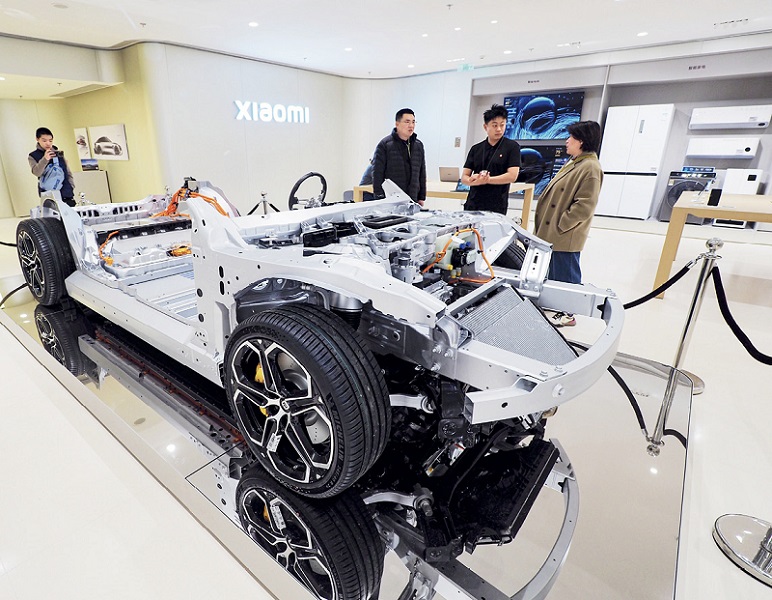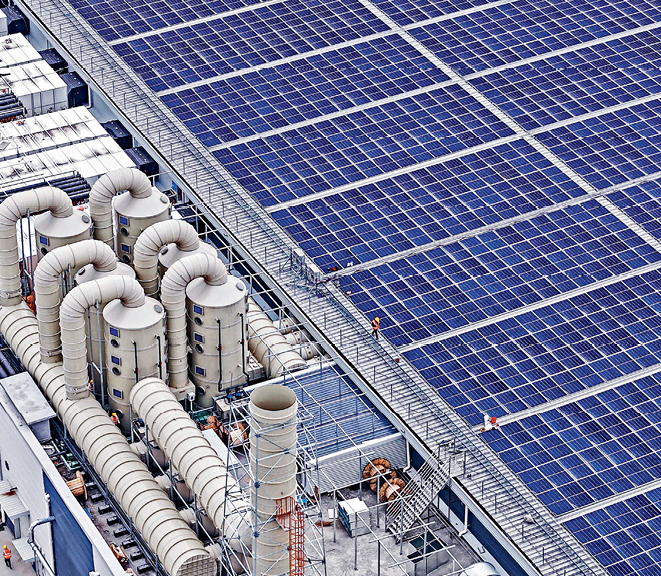
The super charging and battery swap service center which exudes a futuristic ambiance at night in Wuhan on April 9, 2024 has become a hot topic among new energy vehicle owners as its charging time is nine times faster than regular charging centers.
According to Sun Xiansheng, Chairman of the Council of the International Society for Energy Transition Studies, five main factors affect countries’ energy transition.
At a panel discussion on low-carbon energy transformation at the Boao Forum for Asia (BFA) Annual Conference 2024, Sun said the factors are a country’s resources and development stage, its energy transition goal and approach, innovation and technological ability and talents, investment capability, and the external environment and international cooperation. While the world faces the daunting challenge to ensure energy transition and energy security at a low cost, it is not a mission impossible. China is playing an exemplary role in green and low-carbon transition.

People are learning about the car chassis and integrated boost technology model of a Xiaomi vehicle at a Mi Home store in Beijing on March 30, 2024.
China’s Energy Transition
Since Chinese President Xi Jinping announced that China would peak CO2 emissions before 2030 and achieve carbon neutrality before 2060, efforts to advance green and low-carbon energy transition have intensified.
According to this year’s Report on the Work of the Government, in 2023 China’s installed renewable energy capacity surpassed its thermal power capacity for the first time in history, accounting for over half of newly installed renewable energy capacity worldwide.
Also, data from the National Energy Administration show that by the end of last year, China’s installed renewable energy capacity crossed 1.4 billion KW, making up more than half of the country’s installed power generation capacity. The International Energy Agency (IEA) called China “the world’s renewables powerhouse” in its Renewables 2023 report.
China’s photovoltaic (PV) sector has shown outstanding progress. The IEA report says that in 2023, China commissioned as much solar PV as the entire world did in 2022. Despite unprecedented PV manufacturing expansion in the United States and India, China is expected to maintain its 80-95 percent share of global supply chains. China’s PV products, along with electric vehicles and lithium-ion batteries, registered a nearly 30-percent increase in exports last year.
LONGi Green Energy Technology, the world’s largest solar manufacturer, was established only in 2000, with its technologies now widely used in the industry. Zhong Baoshen, chairman of LONGi, said during the panel discussion that the cost of PV power generation remains the lowest compared with other methods for power generation.
The traditional energy giants in China have also committed themselves to green energy transition.
Huang Yongzhang, president of PetroChina, China’s largest oil and gas producer, said new energy is now one of the main businesses of the company. PetroChina is pursuing coordinated development of solar, wind, hydrogen, and other new energies. To achieve green and low-carbon transition, its approach is “clean alternative, strategic replacement, and green development.” “We made a big plan. By 2025, new energy will account for seven percent of our total output, and by 2035, the number will be one-third,” Huang said.
The conglomerate has established a research institute focusing on new energy in Shenzhen. It has carried out a number of new energy projects, including a 200 MW PV plant in the Yumen Oilfield in northwestern China in 2021, its first grid-connected PV project. When operating at full capacity, the plant is expected to reduce the equivalent of 280,000 tons of emissions in a year.
Yu Bing, president of China Energy Investment Corporation, said his company is advancing green and low-carbon transition across its four businesses: coal, power, chemicals, and transportation. The company’s total installed power capacity is 320 million kW, while for renewable energy it is more than 100 million kW. China Energy plans to increase the share of installed capacity of renewable energy to over 40 percent by 2025.
Additionally, the company’s carbon capture, utilization, and storage facility for the coal-fired power generation sector, the largest in Asia, was put into operation in Taizhou, Jiangsu Province in east China, last year. The facility will capture 500,000 tonnes of CO2 every year, which can be used by food processing and other companies.
In 2023, China’s consumption of clean energy accounted for 26.4 percent of its total energy consumption, a 0.4 percentage point year-on-year increase. As China continues to advance its energy transition, it will tighten control over fossil fuel consumption and work faster to develop a new energy system.

Construction workers are working on Trina Solar’s high-efficiency solar cell project (Phase III) which has an annual output of 10GW, in Huai’an City of east China’s Jiangsu Province on March 18, 2024.

The Challenge of Protectionism
China’s progress in low-carbon energy transition has contributed to global efforts in this aspect. According to data released by the IEA, global annual renewable capacity additions increased by almost 50 percent to nearly 510 GW in 2023, and China contributed to over half of that. According to Energy Transition Investment Trends 2024 by BloombergNEF, China was the largest contributor to energy transition investment in 2023, comprising 38 percent of the global total at US $676 billion.
But there are still some challenges for global cooperation on energy transition. A major one is protectionism. Christian Bruch, president and CEO of Siemens Energy, said cooperation is essential to build new energy infrastructure faster. While on one hand, countries are protecting their own industries, on the other hand, they are relying on the global supply chain and global infrastructure. “We must strike a balance to build a resilient industry,” he said and added, “We must let the industry demonstrate that it can achieve more in building a resilient system through cooperation.”
Zhong Baoshen said while China’s PV industry has made significant contributions to the global energy transition, it has to fight the trade barriers erected by the West and other countries. Today’s robust PV industry is the result of global cooperation. “Only through cooperation can we accelerate the energy transition and reduce its cost,” he remarked.
For all the differences, countries across the globe are gradually reaching consensus on green and low-carbon energy transition. While pursuing their separate energy goals, it seems increasingly important for countries to abandon protectionism and leverage new engines to power a greener world.